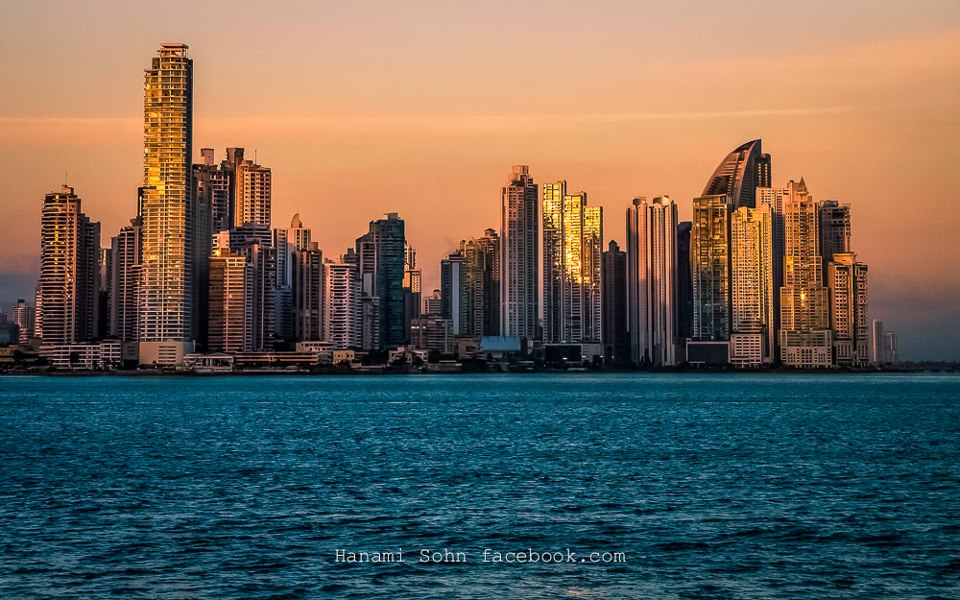Barney Brantingham of Independent News revists Panama after decades to find huge changes to the City.
When I first laid eyes on Panama City many decades ago, it was basically a sleepy, low-profile town. Its only claim to fame was the famed canal.
Today, it’s the skyscraper boom town of the hemisphere, boasting a skyline of nearly 80 high-rises, some more than 70 stories high, amazing in a compact city with less than a million population.
Panama is now a regional economic powerhouse. I can’t believe my eyes.
The $5.4 billion canal expansion is open, speeding ships through the waterway faster, and the sleek new air-conditioned Metro is a welcome relief from Panama City’s traffic jams.
Paving the way for all this was the 1999 U.S. handover of the Canal Zone and other U.S. properties to the Panamanian government.
It promptly raised the tolls, approved attractive tourist development on former U.S.-controlled open space, and set the stage for the explosion of mind-boggling skyscrapers along the waterfront and in the former U.S. Paitilla enclave offering magnificent ocean views. Lavish tax incentives helped, too.
At least 20 more high-rises are planned, a breathtaking boom stimulated in part by investors from Venezuela, Ecuador, and other Latin nations seeking a safe place to invest. Many say another key factor is the fact that Panama has become a tax shelter for those seeking to hide their money or to stash drug profits. Money has been pouring in.
Not all skyscraper projects make it. The oddly named, 104-floor, 1,250-foot Ice Tower was canceled, as was the 97-story Palacio de la Bahía Hotel and the Torre Generali, also breaking the 1,000-foot height mark and promoted as a place where on a clear day one could see both the Pacific and Atlantic oceans. The isthmus is only about 50 miles wide at that point.
Rather than stay at, say, the 66-floor, ultra-modern (and reputedly noisy) Hard Rock Hotel, daughter Wendy and I dropped our bags at the small Central Hotel Panama, a beautifully renovated old building in the Casco Viejo neighborhood with a roof garden and pool.
These days, hip young couples are flocking to the seaside Casco Viejo neighborhood, also known as Casco Antiguo, a World Heritage site. It was originally built as a walled city after privateer Henry Morgan destroyed the first Panama in 1671.
A favorite tourist outing is to visit ruins of Old Panama just outside town on the way to Tocumen Airport.
Casco, once a neighborhood with a dubious reputation, is now the locale of small upscale hotels, coffee shops, and cafés. As for downtown Panama City, the Avenida Central I knew in the old days has banished the loudly honking, brightly painted buses, known as Diablo Rojos (red devils). The main street is now a wide pedestrians-only shopping mall.
Traces of U.S. influences are few and far between, other than the canal itself, of course. The former Albrook Air Force Base is now a busy regional civilian airport next to a massive shopping mall, reached by the Metro in minutes from downtown.
My former U.S. Army base, Ft. Kobbe, is a luxury beach resort. Panama’s ex-president, supermarket billionaire Ricardo Martinelli, led the boom, but he fled the country in 2015 when the government ordered his arrest for alleged corruption and wiretapping of prominent citizens. He reportedly lives in Miami, also jokingly known as the northern capital of Latin America.
Former general Manuel Noriega, once Panama’s strongman dictator and “our man in Panama” for the CIA, fell out of favor with the White House in the 1980s for alleged drug dealing. He was the subject of a bloody U.S. 1989 attack on Panama City to remove him.
After years behind bars in the U.S., he was jailed in Panama but released temporarily recently to prepare for brain surgery. At last report, Noriega, 83, was in critical condition.
